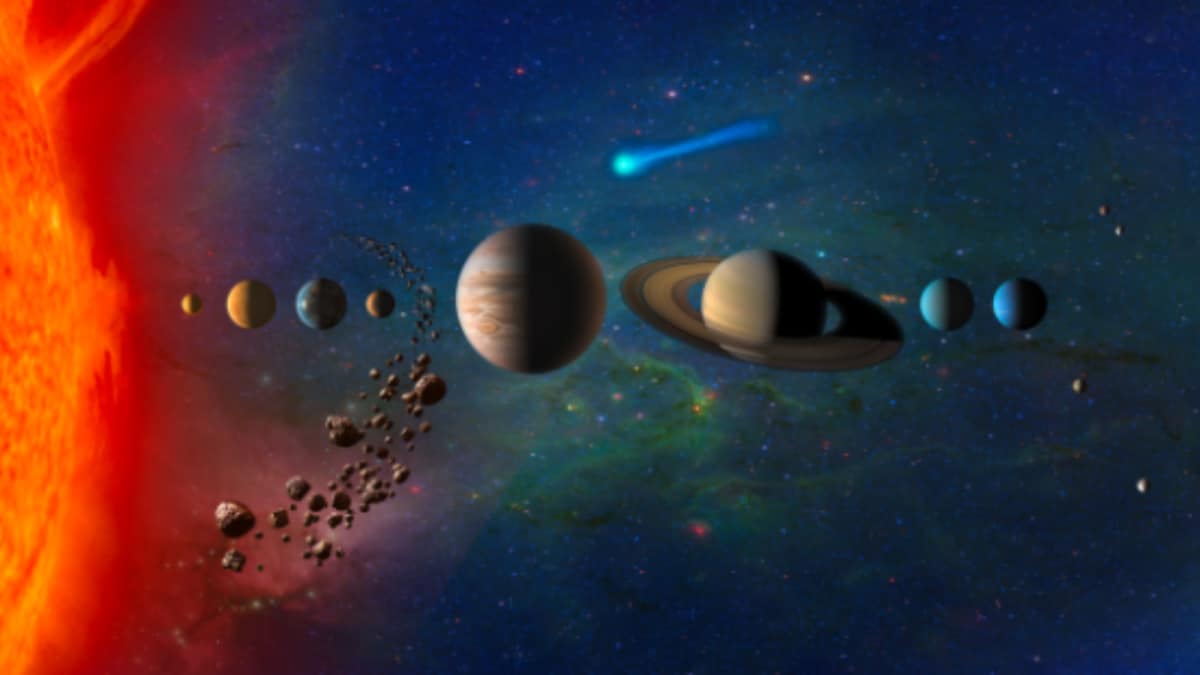Last Updated:
Amir Siraj and team propose Planet Y, a possible unseen planet influencing Kuiper Belt object orbits. Vera C. Rubin Observatory may soon shed light on this solar system mystery.

Planet Y joins a growing list of theoretical planets proposed to explain unusual patterns in the outer solar system. (Image: NASA/Representative)
Astronomers have long speculated about the existence of a hidden planet in our solar system. Now, a new study proposes a fresh candidate, dubbed Planet Y, that could be influencing the orbits of icy objects in the distant Kuiper Belt— a vast, icy region beyond Neptune.
The planet hasn’t been directly observed. Instead, its possible presence is inferred from a puzzling tilt in the orbits of about 50 Kuiper Belt objects, far beyond Neptune’s reach. According to lead author Amir Siraj, an astrophysicist and a doctoral candidate in the department of astrophysical sciences at Princeton University, the study doesn’t confirm a new planet but presents a mystery that a small, unseen planet could explain, CNN reported.
Recommended Stories
“One explanation is the presence of an unseen planet, probably smaller than the Earth and probably bigger than Mercury, orbiting in the deep outer solar system,” Siraj said, according to CNN report.
Planet Y joins a growing list of theoretical planets proposed to explain unusual patterns in the outer solar system, particularly within the Kuiper Belt — the same region that houses Pluto, which was reclassified as a dwarf planet in 2006.
Multiple “ninth planet” theories have emerged in recent years, largely due to the Kuiper Belt’s remoteness and the limited data available. But that may soon change with the upcoming launch of a new telescope called the Vera C. Rubin Observatory, which will conduct an unprecedented 10-year survey of the night sky.
Sitting atop a 2,682-meter-tall mountain in Chile, the telescope houses the world’s largest digital camera and is set to begin scanning the sky later this year. It will map the entire night sky every three days, dramatically increasing the number of known Kuiper Belt objects and offering a clearer view of the solar system’s outer edge, the report metioned.
Published in the Monthly Notices of the Royal Astronomical Society: Letters, the paper builds on a long-running astronomical debate sparked by similar hypotheses like Planet X and Planet Nine. Siraj emphasizes that Planet Y doesn’t rule out Planet Nine—they could both exist.
The idea emerged when Siraj noticed a surprising 15-degree tilt in the Kuiper Belt beyond 80 astronomical units (AU), despite expectations that it would align with the near-flat plane of the solar system. Simulations ruled out earlier theories, including Planet Nine, and indicated that a new planet—likely 100–200 AU from the Sun and between Mercury and Earth in mass—could account for the distortion.
About the Author

Manisha Roy is a Senior Sub-Editor at News18.com’s general desk. She comes with an experience of over 5 years in media industry. She covers politics and other hard news. She can be contacted at Manisha.Roy@nw18…Read More
Manisha Roy is a Senior Sub-Editor at News18.com’s general desk. She comes with an experience of over 5 years in media industry. She covers politics and other hard news. She can be contacted at Manisha.Roy@nw18… Read More
New York, United States of America (USA)
October 04, 2025, 19:33 IST
Loading comments…
Read More



)